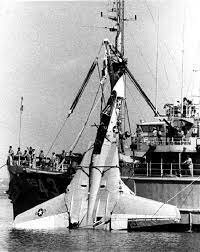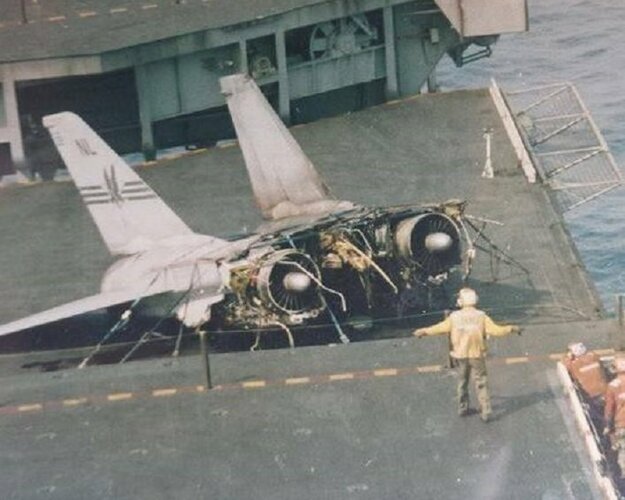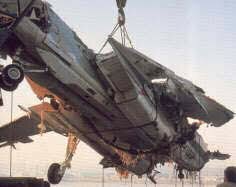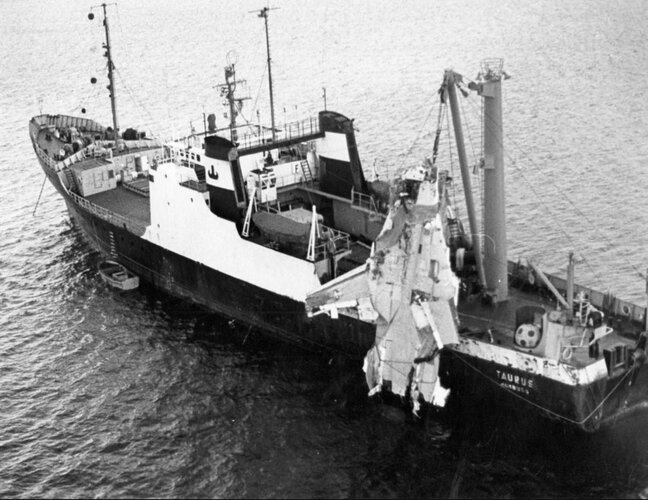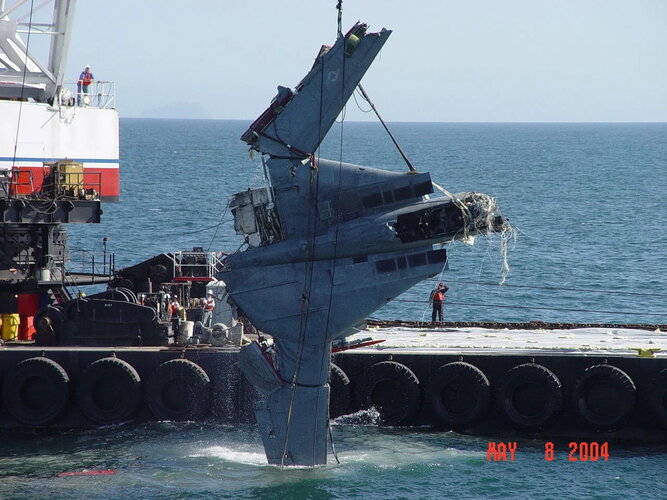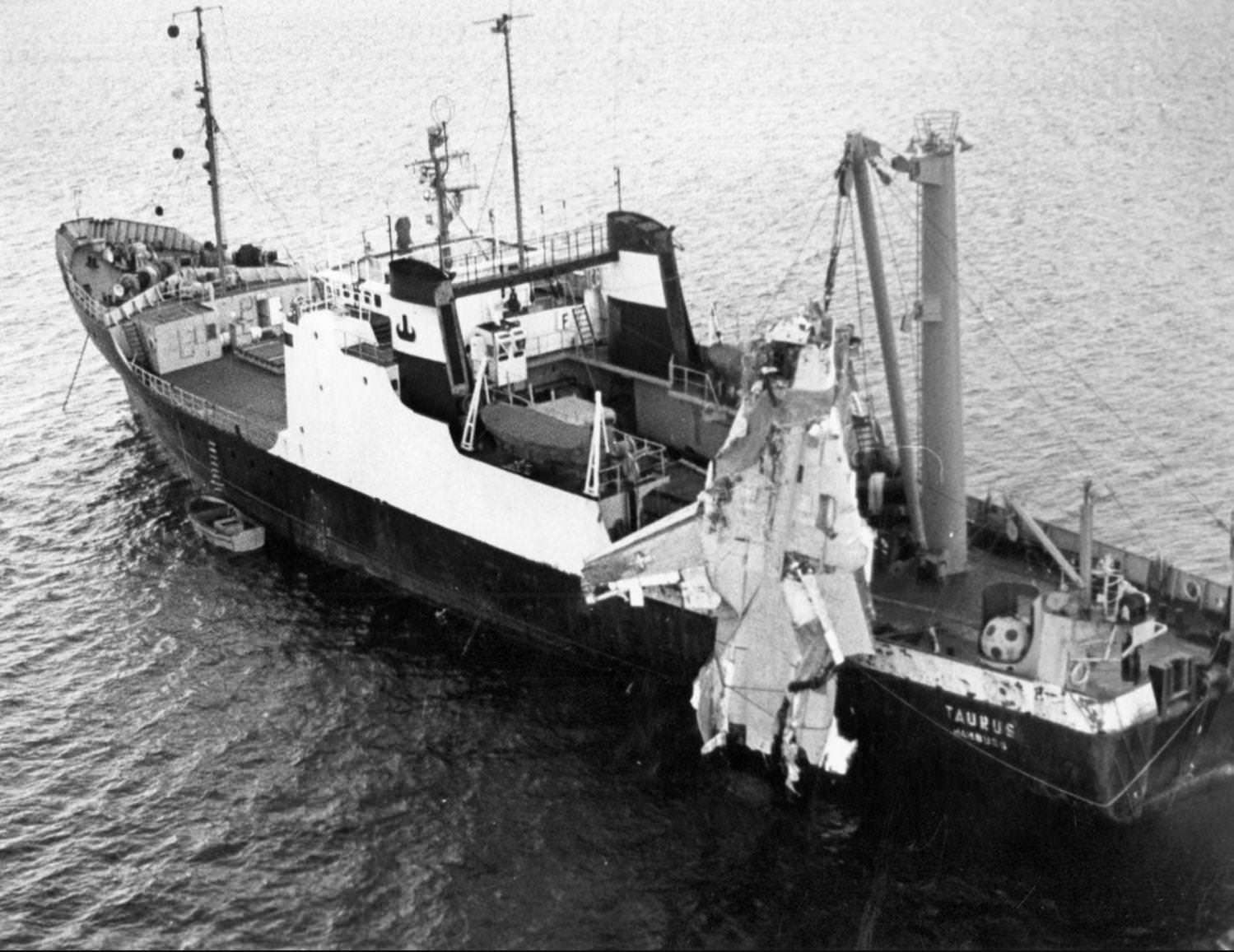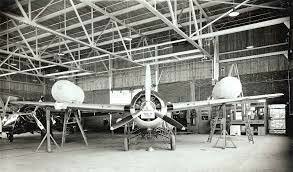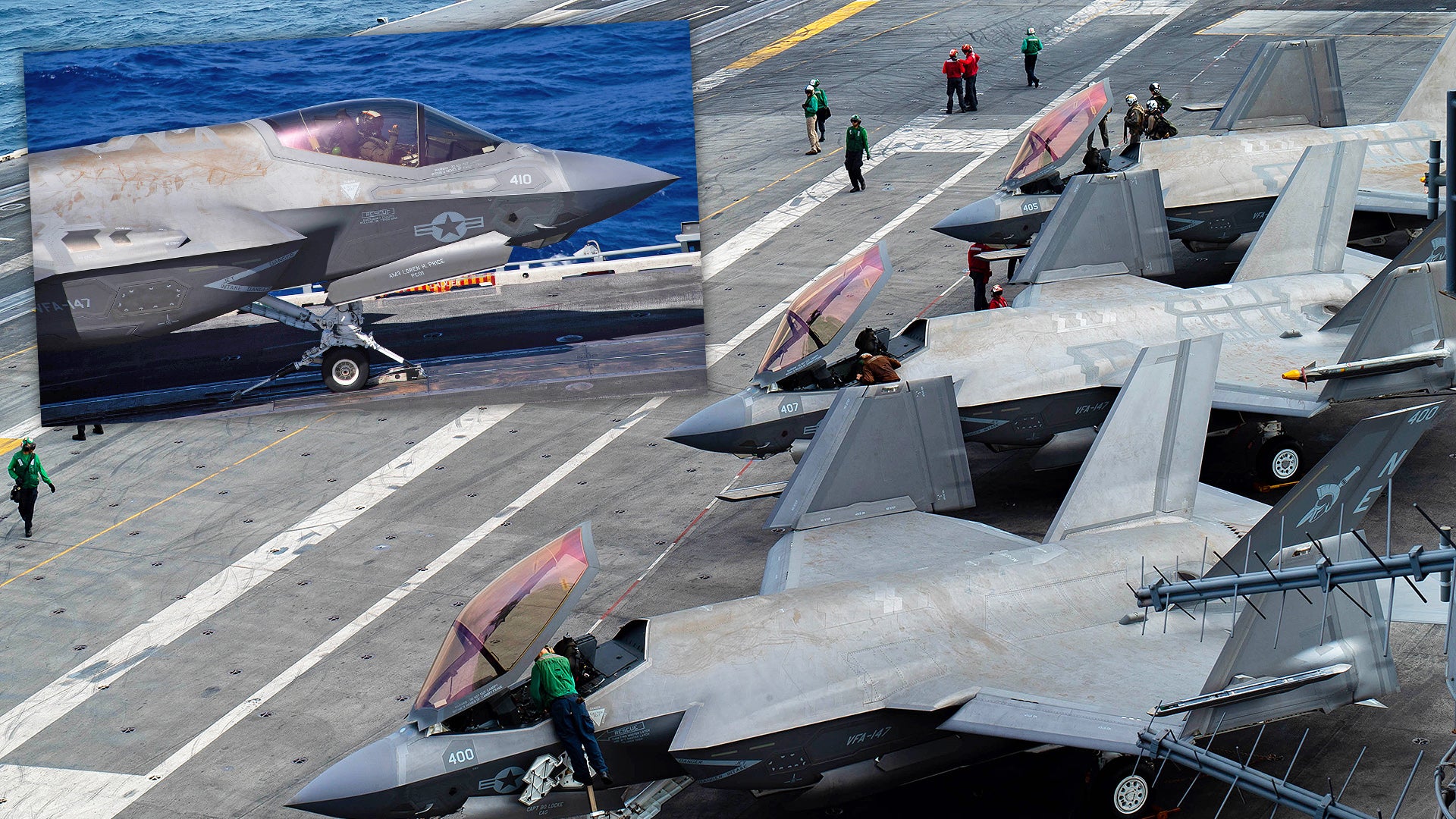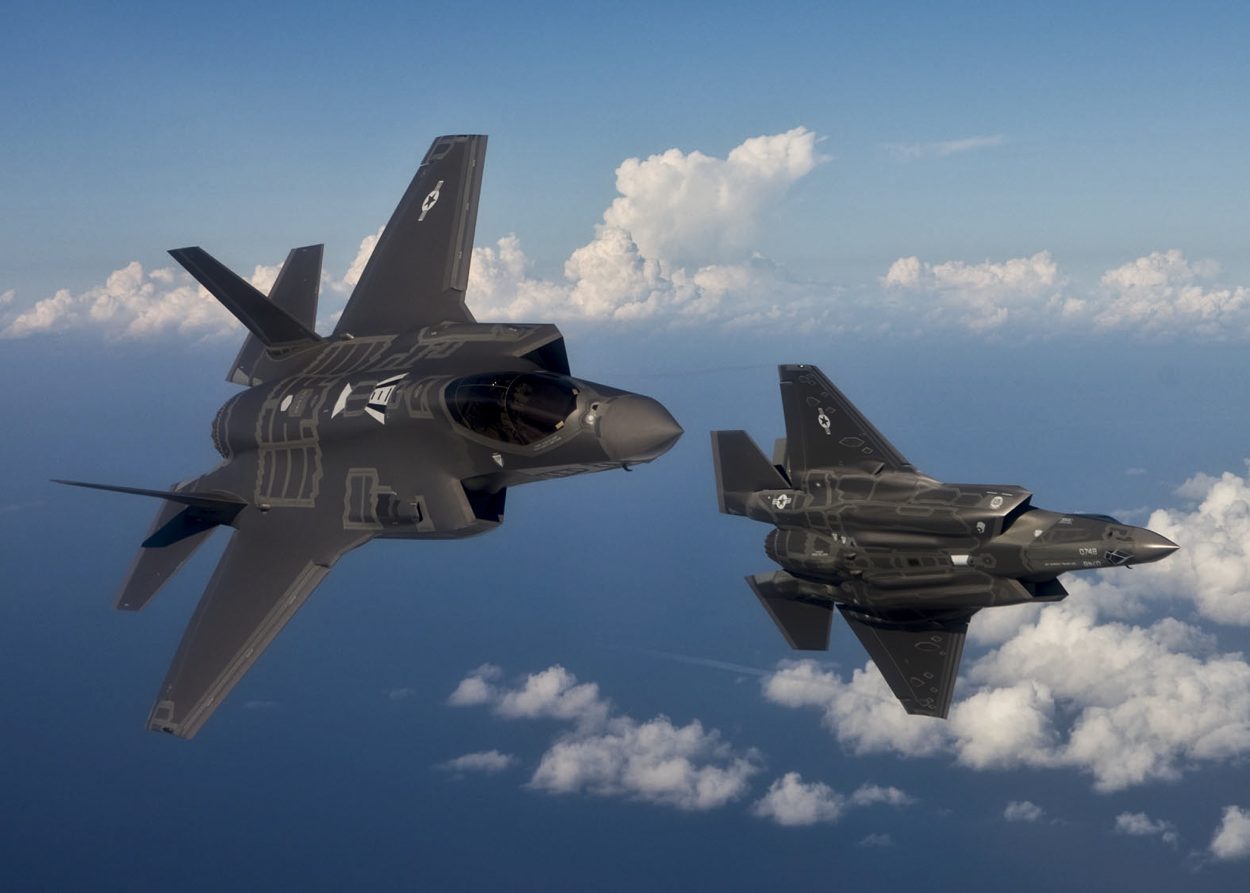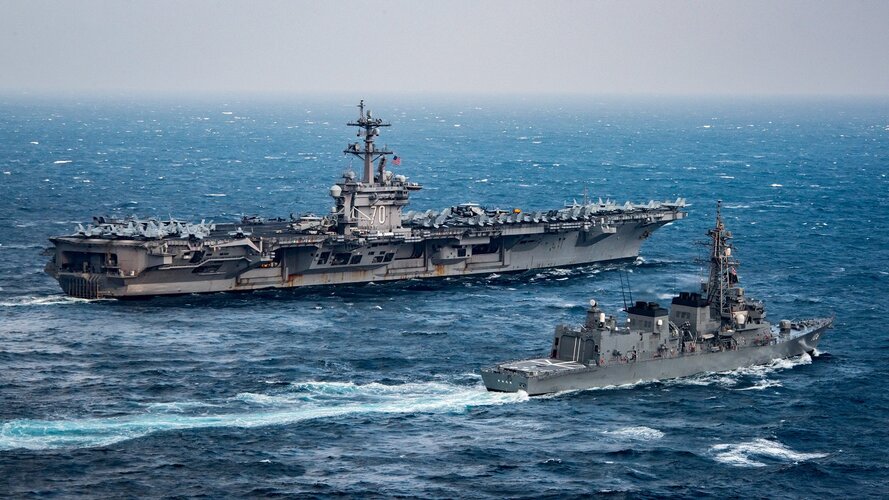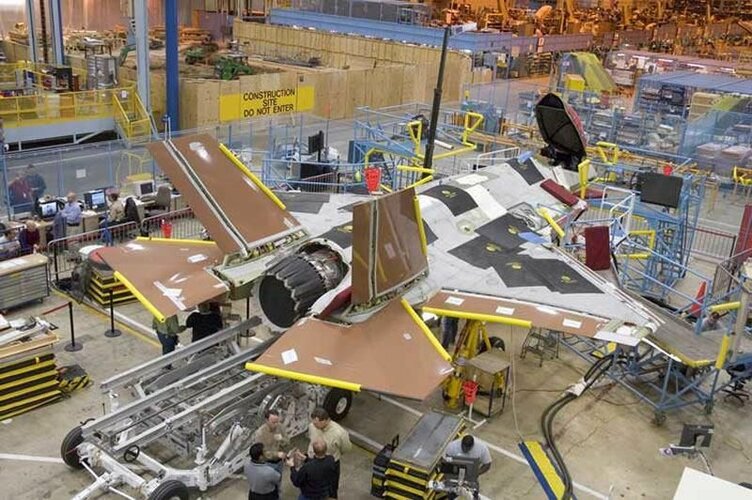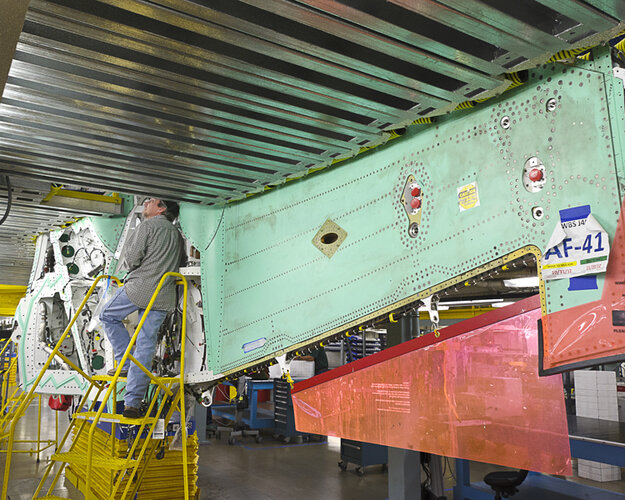I don’t understand all the fuss about this recovery operation, as there is nothing new about navies trying to get kit back from ocean depths. A quick google shows recovery operations for F-14s in 1976, 1994 and 2004 lost at sea.
The RN also tries to get its kit back. There are stories of Sea Kings lost at sea and recovered, dating back to 1972.
What has changed over the years is the technology allowing recovery from ever greater depths. Project Azorian back in 1974 attempted the recovery of a Soviet sub from 16,000 feet down. That was an extraordinary feat for its time. Back then the offshore oil industry considered a deep water well was 350ft down in the North Sea. Now we have an offshore oil industry that is drilling oil wells in 11-12,000 feet of water and scientific research drilling in double that depth.
So an aircraft lost overboard that might have been considered irrecoverable back in the 1970s is now considered recoverable and worth recovering, not only to deny its secrets to today’s “enemy” but to find out just what did go wrong and hopefully prevent it happening again.
Operating aircraft at sea inevitably means losing one sooner or later. And with that the acceptance of the cost of recovery. Thankfully it now happens a lot less than it did back in the1950s or 1960s.
The RN also tries to get its kit back. There are stories of Sea Kings lost at sea and recovered, dating back to 1972.
What has changed over the years is the technology allowing recovery from ever greater depths. Project Azorian back in 1974 attempted the recovery of a Soviet sub from 16,000 feet down. That was an extraordinary feat for its time. Back then the offshore oil industry considered a deep water well was 350ft down in the North Sea. Now we have an offshore oil industry that is drilling oil wells in 11-12,000 feet of water and scientific research drilling in double that depth.
So an aircraft lost overboard that might have been considered irrecoverable back in the 1970s is now considered recoverable and worth recovering, not only to deny its secrets to today’s “enemy” but to find out just what did go wrong and hopefully prevent it happening again.
Operating aircraft at sea inevitably means losing one sooner or later. And with that the acceptance of the cost of recovery. Thankfully it now happens a lot less than it did back in the1950s or 1960s.

